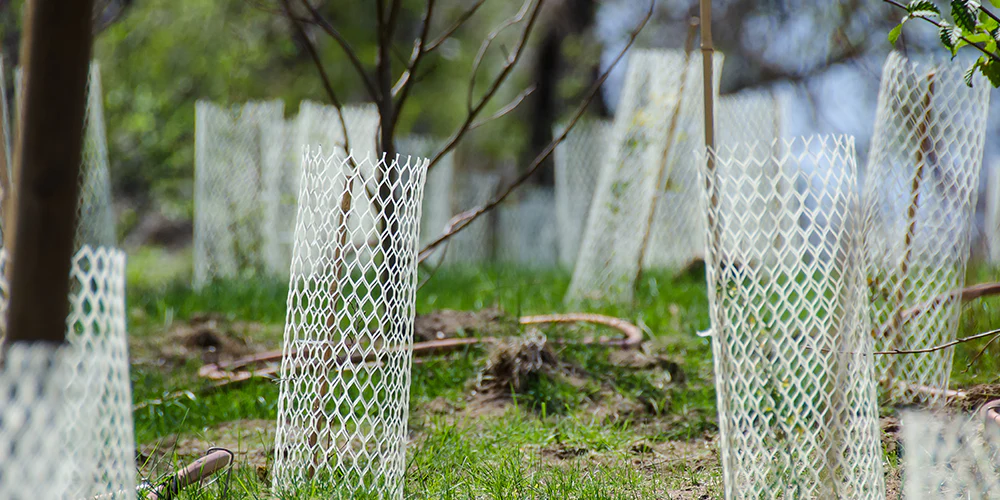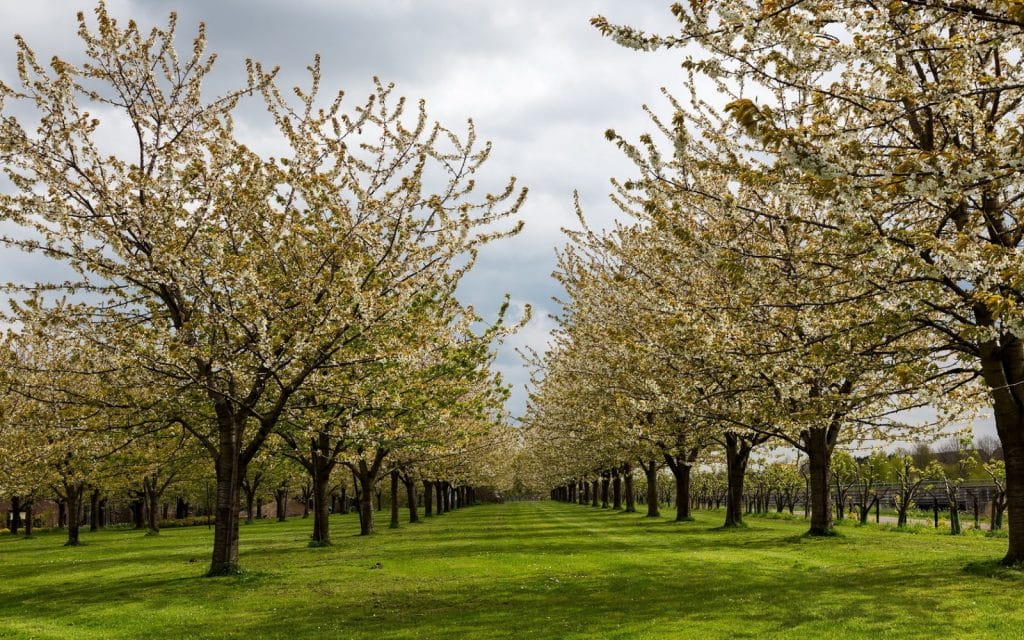Evergreens vs. Deciduous Trees: How to Care for Them in Winter
By Innovation Grounds
When the temperature drops and winter settles in, tree care can become a bit more challenging. Whether you have evergreens or deciduous trees in your yard, understanding the unique needs of each type of tree during the colder months is essential for maintaining their health and appearance. In this guide, we will explore the differences between evergreens and deciduous trees and provide practical tree maintenance tips to help you care for them in winter. If you’re in a place like Austin, Texas, where the climate can vary, proper winter care becomes even more crucial.
Evergreens vs. Deciduous Trees: Key Differences
Before diving into the specifics of winter care, it’s helpful to understand the main differences between evergreens and deciduous trees.
Evergreens: As the name suggests, evergreen trees retain their leaves (or needles) year-round. These trees, such as pines, spruces, and firs, have adapted to withstand cold temperatures. Their leaves are covered with a waxy coating, which reduces water loss. Evergreen trees also have deep root systems, allowing them to survive harsh conditions, even when the ground is frozen.
Deciduous Trees: Unlike evergreens, deciduous trees shed their leaves in the fall and remain bare through the winter months. Trees like oaks, maples, and elms fall into this category. While they are dormant during the winter, they still require attention to ensure a healthy reemergence in spring. Deciduous trees are generally more susceptible to winter damage than evergreens, making proper winter care even more important.

Evergreen Tree Care in Winter
Evergreens are known for their resilience during winter, but that doesn’t mean they don’t require attention. Here are some essential evergreen tree care tips to ensure they stay healthy throughout the colder months:


1. Watering
Though winter usually means reduced rainfall, evergreens still need moisture, especially in areas like Austin where the weather can be unpredictable. During dry spells, it’s important to water your evergreen trees deeply. Even if the ground is cold, if it’s not frozen, water can still penetrate the soil and reach the roots. Watering evergreens in winter helps prevent desiccation (drying out) due to cold winds, which is a common issue for these trees in winter.

2. Mulching
Mulching around evergreen trees helps to regulate soil temperature and moisture levels. It also protects the roots from extreme cold. Apply a thick layer of mulch (about 2-3 inches) around the base of your evergreen trees, but make sure it doesn’t touch the trunk directly. This will create a barrier that helps to keep the root zone insulated and prevents frost from penetrating too deeply.

3. Preventing Snow and Ice Damage
Snow accumulation on the branches of evergreen trees can be a problem, especially when it turns to ice. Heavy ice build-up can cause branches to break or snap. If you live in a region that experiences heavy snow, it’s a good idea to gently shake off excess snow from the branches. Avoid using metal or hard objects that could damage the bark or needles. You may also consider using tree wraps to protect the branches from ice damage.

4. Pruning
Pruning evergreen trees is best done in late winter or early spring before the new growth begins. However, you can still inspect your evergreen trees during the winter months and remove any dead, diseased, or damaged branches. Cutting back damaged branches not only prevents them from becoming a hazard but also helps your evergreen maintain its shape and health going into the warmer months.

5. Protection from Windburn
In regions like Austin, where winter winds can be strong and dry, evergreen trees are at risk for windburn. Windburn occurs when the dry winds pull moisture from the leaves or needles, causing browning or needle drop. To protect your evergreens, consider placing windbreaks around them—whether that’s installing a temporary physical barrier or planting shrubs that can shield your trees from the wind.

Deciduous Tree Care in Winter
Deciduous trees, as mentioned earlier, go dormant during the winter months, but that doesn’t mean they don’t need care. Here are some key tree maintenance tips for deciduous trees during the winter season:


1. Watering
While deciduous trees don’t require as much water in winter as evergreens, it’s still important to ensure they’re not drying out. In areas where winter rainfall is scarce, watering during dry spells can keep the roots hydrated. Avoid watering when the ground is frozen, but if temperatures rise above freezing, it’s a good time to give your trees some deep watering.

2. Mulching
Just like with evergreens, mulching around deciduous trees helps protect the root system from extreme cold. Apply a 2-3 inch layer of mulch around the tree’s base, but again, avoid placing it directly against the trunk. A proper mulch layer insulates the roots and helps retain moisture, which is crucial for tree health when the temperatures fluctuate.

3. Protecting the Bark
The bark of deciduous trees is more vulnerable during winter than in the warmer months. Sunscald can occur when the sun heats up the tree’s bark during the day, and then the temperature drops sharply at night. This can cause the bark to crack, leading to further damage. To prevent this, you can wrap the trunk of your deciduous tree with tree wraps or burlap. Make sure the wrap is not too tight and leaves space for the tree to breathe.

4. Pruning and Structural Care
Winter is a good time to inspect your deciduous trees for any broken, dead, or diseased branches. Pruning during this dormant period helps prevent the spread of disease and encourages healthier new growth in the spring. Be cautious not to over-prune, as removing too many branches can stress the tree. Proper pruning techniques, such as making clean cuts at the branch collar, will help the tree heal faster and encourage stronger growth.

5. Protecting from Rodents and Pests
Rodents can be a problem for deciduous trees during the winter, as they may gnaw on the bark. Installing tree guards or wraps around the base of the tree can help prevent this. Additionally, make sure to keep the area around your trees clean and free of debris where rodents can hide.

Special Considerations for Austin Tree Care
In Austin, the winters are typically mild compared to other regions, but occasional cold snaps and freezes can still pose risks to both evergreen and deciduous trees. Here are a few additional tips for caring for trees in Austin during the winter months:
Monitor Weather Closely: Austin’s weather can be unpredictable. It’s important to stay on top of the forecast and prepare your trees for cold weather when it’s predicted. If temperatures drop unexpectedly, use frost blankets or tree wraps to protect vulnerable trees.
Avoid Overwatering: While it’s essential to keep your trees hydrated during dry spells, overwatering in winter can lead to root rot, particularly in trees planted in poorly drained soil. Always check the moisture level before watering.
Consult Local Experts: If you’re unsure about the best care practices for your trees, it can be helpful to consult an Austin tree care expert. Local arborists will know the best tree care techniques for the area’s specific climate.


Conclusion
Whether you have evergreens or deciduous trees in your yard, proper tree care during the winter months is essential to ensure their health and longevity. By following these evergreen tree care and deciduous tree care tips, you can help your trees survive the winter and thrive when spring comes. For Austin residents, adjusting your care based on the local climate can provide the added protection your trees need to weather the colder months. With proper care and attention, your trees will continue to add beauty and value to your landscape for many years to come.



